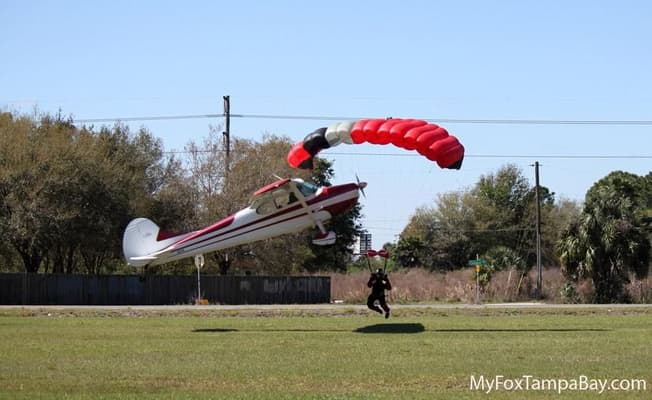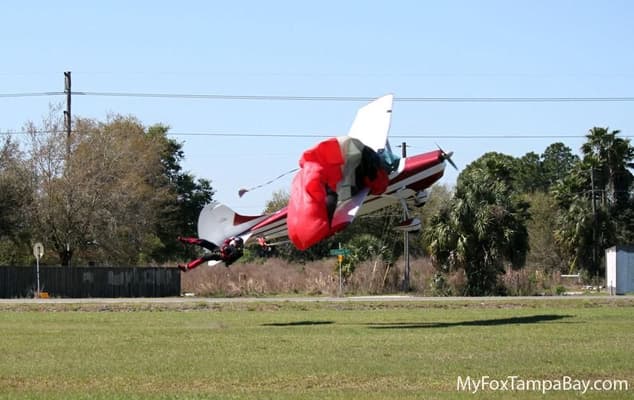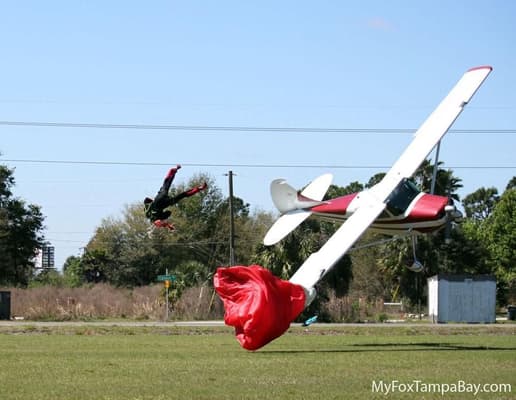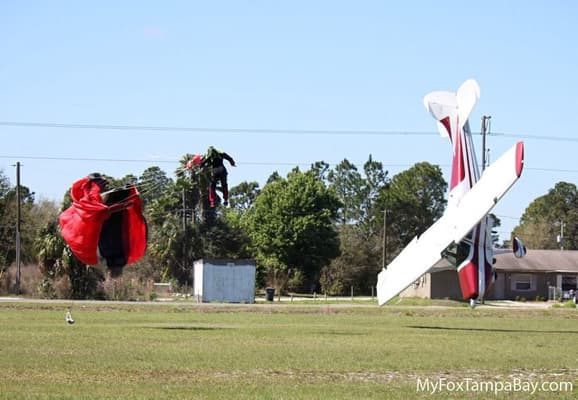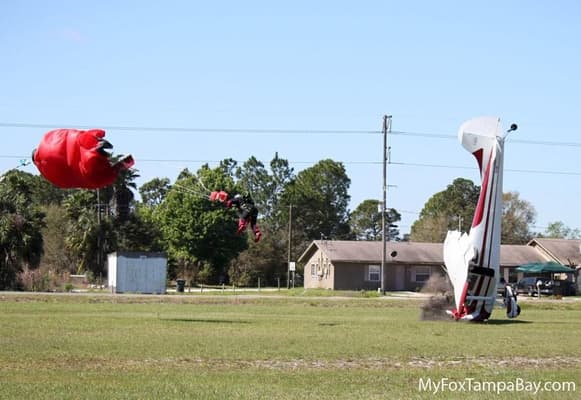Anatomy of a midair, ouch
Join Date: Jan 2008
Location: UK
Posts: 1,464
Likes: 0
Received 0 Likes
on
0 Posts
Join Date: Dec 2014
Location: LHBS
Posts: 281
Likes: 0
Received 0 Likes
on
0 Posts
Just recently happened to me: I was on final to a paved runway and just before the threshold, my daughter told me she was seeing a skydiver above us through the small top windows (C-152). That was a bit of surprise, but I guess it is safer to have the parachutist above me, with the canopy deployed.
Nevertheless the skydivers' landing zone was very near to of opposite runway thresholds, would have made an interesting situation if I go around for some reason.
Nevertheless the skydivers' landing zone was very near to of opposite runway thresholds, would have made an interesting situation if I go around for some reason.
Always freaks me out flying into Dunkeswell when parachutists under canopy are dropping on the dead side of the circuit. I am sure it is safe enough if everyone operates correctly but still feels weird to me!
Moderator
I flew jumpers for a few seasons, and this risk was a great concern. As the jump pilot, I was more aware than other pilots at the airport would have been. The jumpers were really good at avoiding the approach path, and runway itself, and I got really good at counting jumpers to account for everyone before I committed to the runway. The alarming even pictured is hard to call, but I'm not rushing to blame the pilot, I can believe that they were looking where they were going, and got a sudden nasty surprise. It's possible that a "jumpers away" call from the jump plane could have been minutes earlier, even before they were monitoring the radio before takeoff.
Though I never jumped, I am certain that a competent jumper could have heard and been aware of the Cessna beginning its takeoff, and being able to predict its path, and maneuver just enough out of its path to prevent a collision - being the jumper, there'd be good motivation! I do not consider the Cessna to be maneuverable enough to be able to have averted that collision at the last moment.
Though I never jumped, I am certain that a competent jumper could have heard and been aware of the Cessna beginning its takeoff, and being able to predict its path, and maneuver just enough out of its path to prevent a collision - being the jumper, there'd be good motivation! I do not consider the Cessna to be maneuverable enough to be able to have averted that collision at the last moment.
Thread Starter
I am certain that a competent jumper could have heard and been aware of the Cessna beginning its takeoff, and being able to predict its path
Moderator
Fair enough, The position of the Cessna did not make me think it was landing, but yes, as he pilot probably suddenly pulled up to avoid a collision, it makes more sense. That said, the jumper probably had a better view of where he intended to go, than the Cessna pilot had a view of where the jumper was coming from. Were the jumper to have been a piloted aircraft, the Cessna would have had the right of way (being lower on the approach). Perhaps the piloted plane must give way to the unpowered descending jumper, though I'm not certain of my regs here, as it's hard to give way to an airborne object you can't see, as it's approach path from above is very steep.
As the Cessna pilot, I would feel terrible that the collision had occurred, though I'm not sure that I would accept all the responsibility for it...
As the Cessna pilot, I would feel terrible that the collision had occurred, though I'm not sure that I would accept all the responsibility for it...
Not All Canopies are Equal.
Though I never jumped, I am certain that a competent jumper could have heard and been aware of the Cessna beginning its takeoff, and being able to predict its path, and manoeuvre just enough out of its path to prevent a collision - being the jumper, there'd be good motivation! I do not consider the Cessna to be manoeuvrable enough to be able to have averted that collision at the last moment.
Thread Starter
Aircraft and skydiver operate on the see and be seen. The USPA manual says,
https://uspa.org/Portals/0/files/GM_...raftManual.pdf
Near misses. I would venture the pilots are at fault here, notams not read, not on frequency, no map with the necessary parachuting depiction.
In accordance with the FARs, the jump pilot must establish radio communication with the nearest FAA facility at least five minutes before any jumping is to begin. In addition, calls in-the-blind on the airport Common Traffic Advisory Frequency (CTAF) announcing skydiving activity should be made at least one minute before jumpers leave the aircraft. ATC must be advised once the last jumper has left the aircraft
Near misses. I would venture the pilots are at fault here, notams not read, not on frequency, no map with the necessary parachuting depiction.
I guess it all depends on the airfield/dz layout. Where I instructed (Sibson), aircraft and parachutists were kept well apart as the DZ is distant from the runways. The main danger was that referred to above in megan's post, when pilots didn't read their notams and infringed the active DZ airspace at varying altitudes. Quite a few close calls over the six years I was there...including a fast jet from an airfield just to the north...
Thread Starter
I guess it all depends on the airfield/dz layout
https://www.airnav.com/airport/X49




